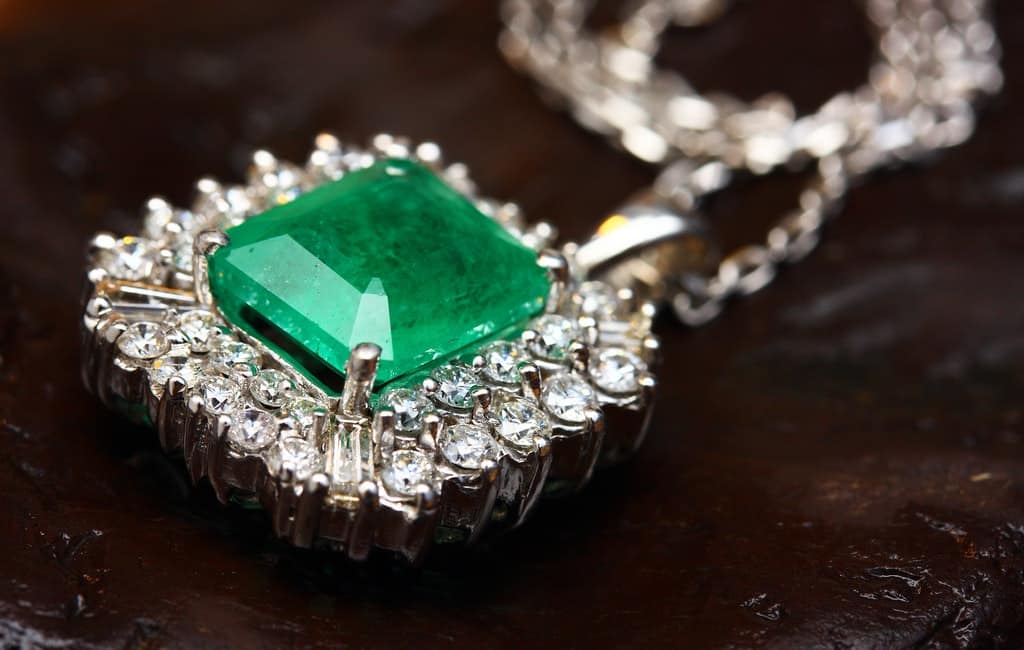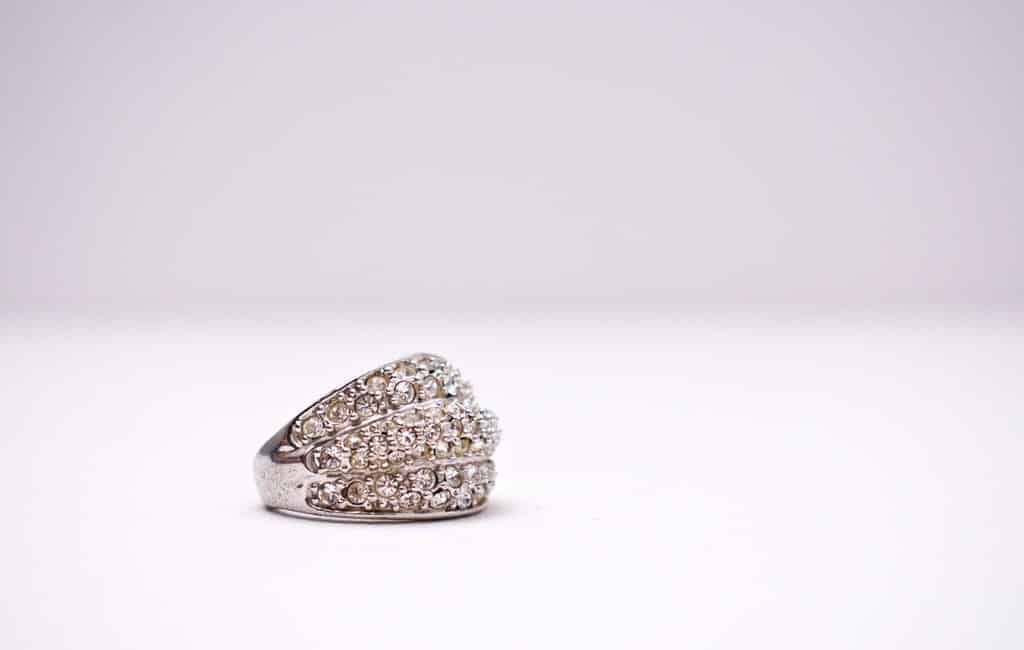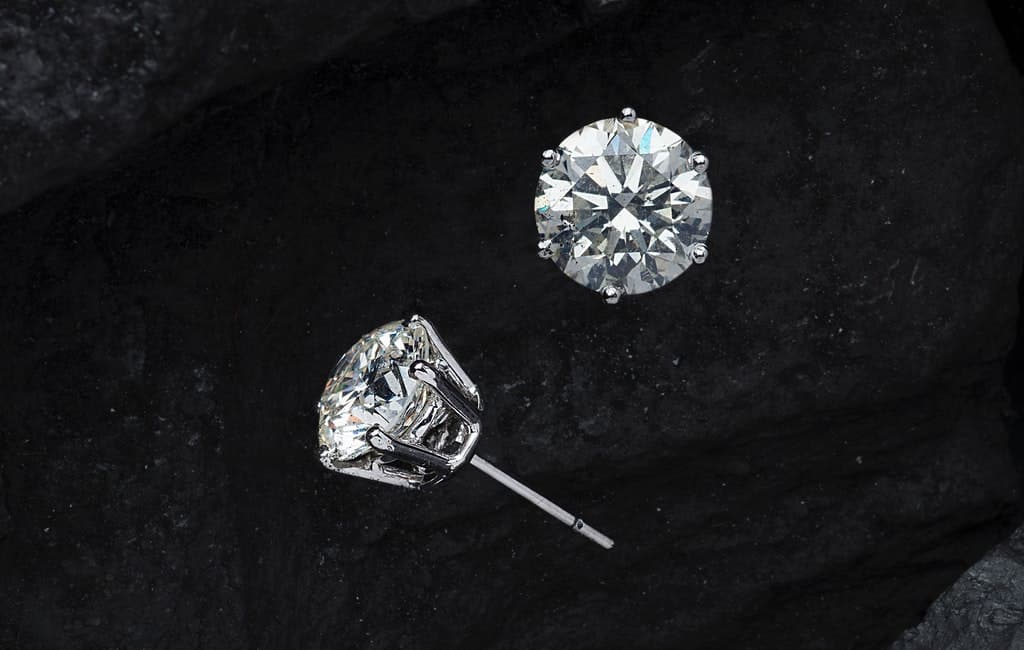Gemstones have been in existence for several years (millions and – possibly – billions of them). There are different types of them in the world. Some of them include precious stones, such as diamonds, rubies, sapphires and emeralds; while others are semi-precious stones of lesser commercial value per unit e.g. alexandrite, kyanite, citrine, quarts, amethyst, jade, and so on.
The notable variety of gemstones scattered all around the world has provided the global gemstone industry with a wide range of options to choose from every year. But diamonds have some of the highest units of demand across the world.
WHAT IS A DIAMOND?
A diamond is a gemstone that is formed when pure carbon, which exists deep beneath the earth’s crust, is acted upon by extreme forces of heat and pressure. When this happens, the atoms of the pure carbon are usually rearranged into rigid crystal lattice structures which are not very easy to break. This rigid crystal lattice structure gives rise to the remarkable hardness of diamonds, which is why they are often regarded as one of the hardest substances in the world.
Despite their hardness, diamonds are often regarded as the chief gemstone or the most popular and desirable gemstone in the world, because they have wonderful properties such as their notable brilliance, elegance and beauty, which make their wearer fashionable, even as it denotes their high class and wealth (because diamonds are very expensive).

Culturally, they are also seen to represent deep, long-lasting and abiding love (probably because they are generally touted as the hardest known material in the world). Some traditional and cultural beliefs also claim that diamonds attract wealth and abundance to their wearer. All these facts and attributes make up some of the reasons why jewelers around the world prefer to make pieces such as earrings, necklaces and bracelets out of diamonds; they know that diamonds will always be in high demand (particularly when they are of very high quality).
WHAT ARE THE TYPES OF DIAMONDS?
There are different types of diamonds in the world. They can be divided into various groups, based on factors such as the origin of the diamond, the quality of the diamond, the color of the diamond, the cut and shape of the diamond and so on. Based on such factors, each unique diamond can be grouped into any one of the following categories:
- Natural or lab-grown diamonds
Natural diamonds are the type of diamonds that occur by themselves in nature. This type of diamonds is formed when natural deposits of pure carbon are worked upon by extreme natural forces of pressure and heat (which process the pure carbon atoms into diamond crystals).
Natural diamonds may occur in any shape, form and color depending on the factors prevalent in the area where they are formed and mined. For instance, colored diamonds are formed when different chemical elements and compounds, other than pure carbon, manage to infiltrate a diamond’s rigid crystal lattice structure during its formation process. The end result of such infiltration – or the color formed within the diamond – usually depends on the type of chemical element or compound which the diamond has been exposed to in its natural state (although, it should be known that lab-grown diamonds can also exhibit colors when the necessary chemical elements are added to them, while the diamonds are being grown).
Lab-grown diamonds, on the other hand, are the type of diamonds which are formed in the lab, during synthetic, man-made procedures. Lab-grown diamonds can be differentiated from natural diamonds through scientific techniques, but both types of diamonds are usually made from the same raw materials (i.e. pure carbon) and similar processes (i.e. exposure to extreme pressure and heat). The only major difference between them is that lab-grown diamonds are usually created in the lab, under controlled circumstances.

- Gem-quality and industrial grade diamonds
In terms of quality, diamonds can be divided into either gem-quality diamonds or industrial grade diamonds.
Most of the diamonds produced around the world are of industrial grade because they usually contain some sort of flaw or the other. These diamonds are usually opaque or translucent, instead of being transparent, they may contain impurities and sometimes, their color is just not right. At other times, they may not be brilliant enough as well. Majority of industrial grade diamonds are used in industries for activities such as polishing, mining and drilling. They may also be used in making tools which are used in cutting other diamonds, as diamonds can only be cut by other diamonds (or any other material which is harder and stronger than diamonds).
Gem-quality diamonds, on the other hands, are perfect diamonds of very high quality; which contain very little or zero impurities, and have the right sort of brilliance, sparkle and transparency, amongst other qualities. Being of very high grade, gem-quality diamonds are often used in making necklaces, rings and other pieces of jewelry, as they are usually more conventionally beautiful, and fit the usual criteria and description of typical gemstones more aptly.
WHO DISCOVERED DIAMONDS?
Diamonds have existed for billions of years (as many of them take around that time to form in nature, although, some begin to form naturally within several months). They have been mined for hundreds of years and have a very illustrious and rich cultural history. Traditionally, they signify wealth, abundance, prosperity, class and elegance; and they have been used by royalty for millennia, in making crowns and other significant items.
Many people wonder who the first person to discover diamonds is, but the simple fact is that diamonds were discovered so long ago that their discovery predates any recorded history. Yet, many researchers and scientists believe that diamonds were first discovered in caves in within India, between 4 B.C. and 6 B.C.
In some countries around the world, where the discovery of diamonds is fairly recent compared to some parts of the world, there may still be some records of the individual who first discovered diamonds there. For instance, in South Africa, Erasmus Jacobs – a boy who was 15 years old at the time – is recorded to be the first person to discover diamonds on the banks of the Orange River.

